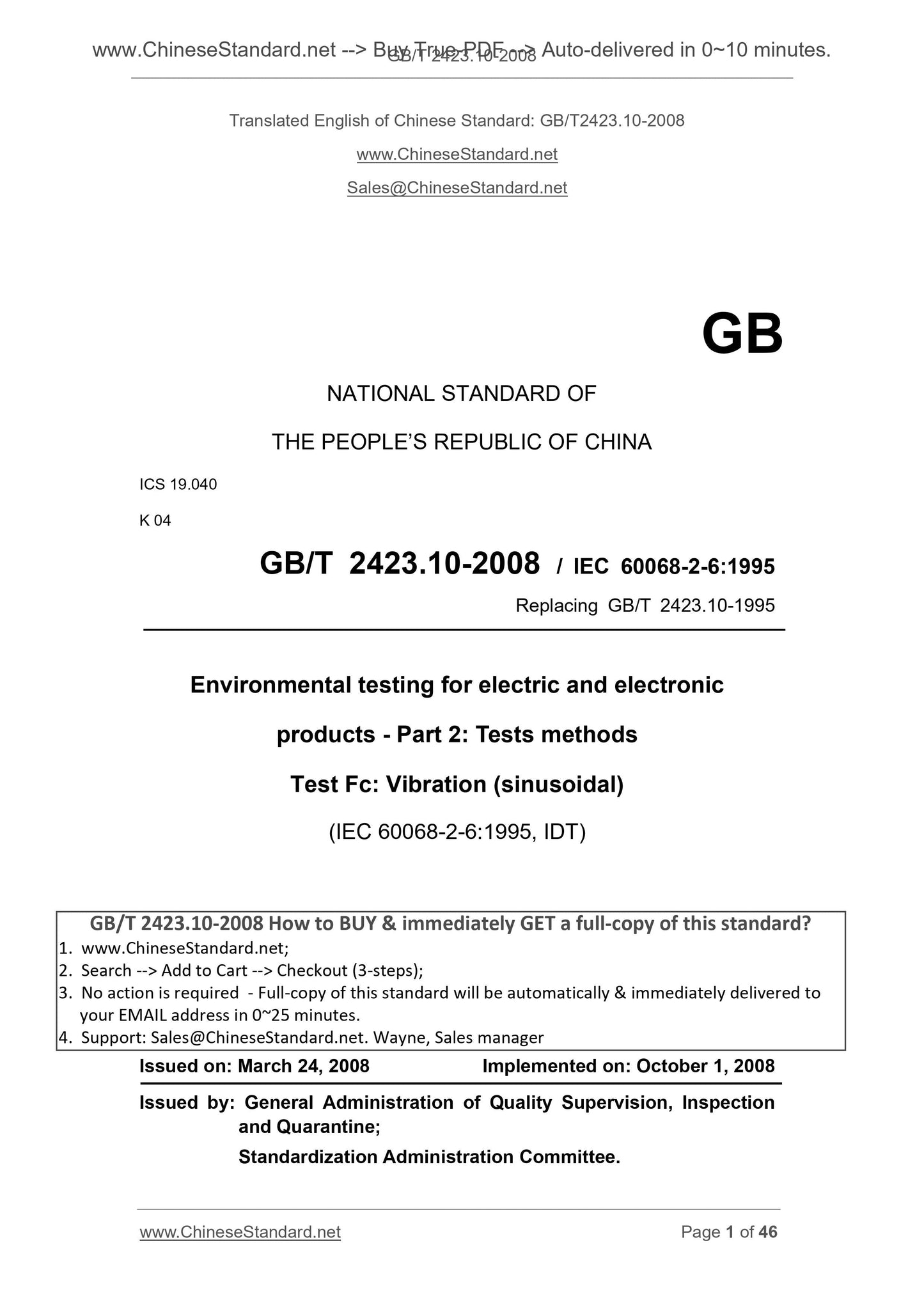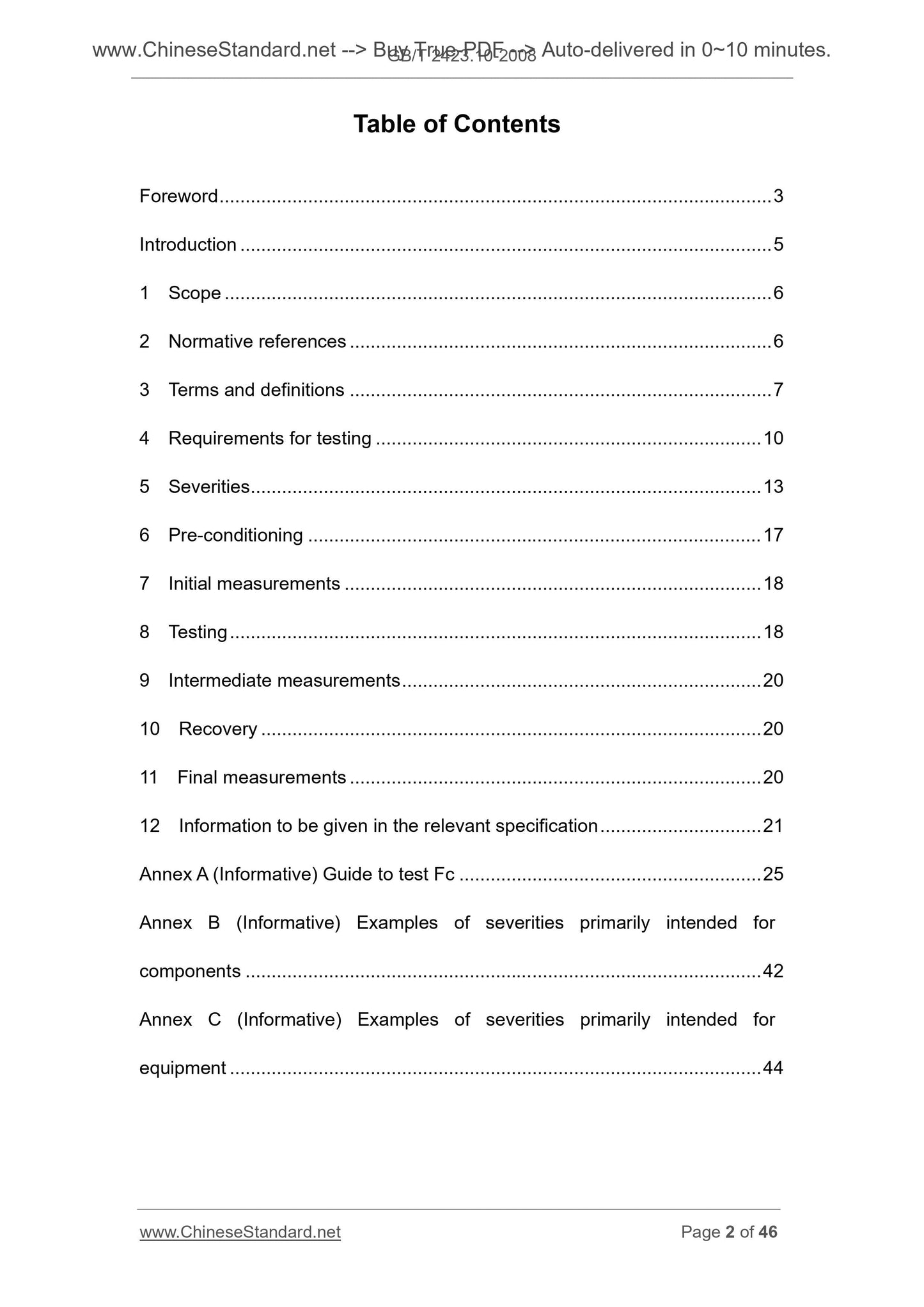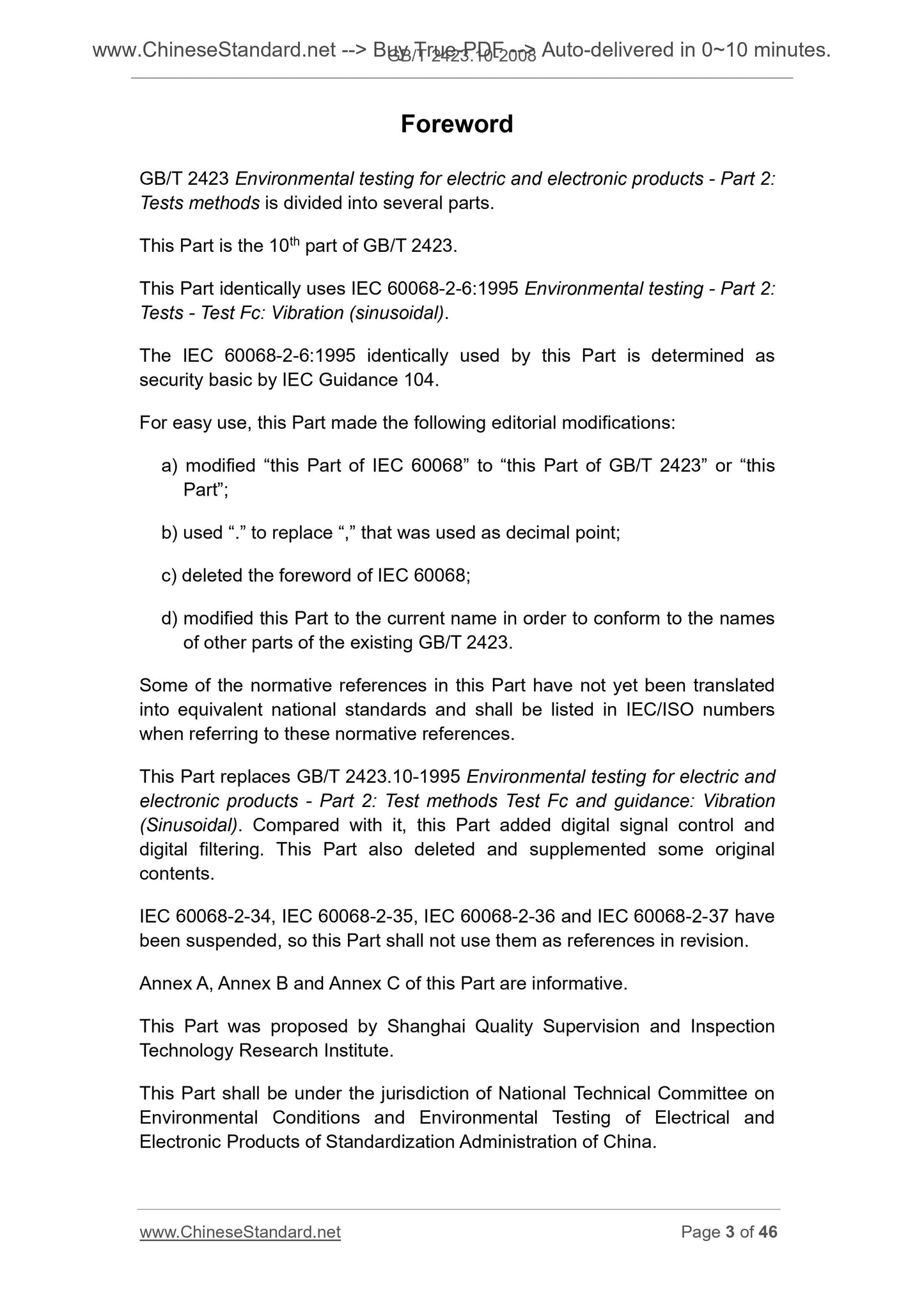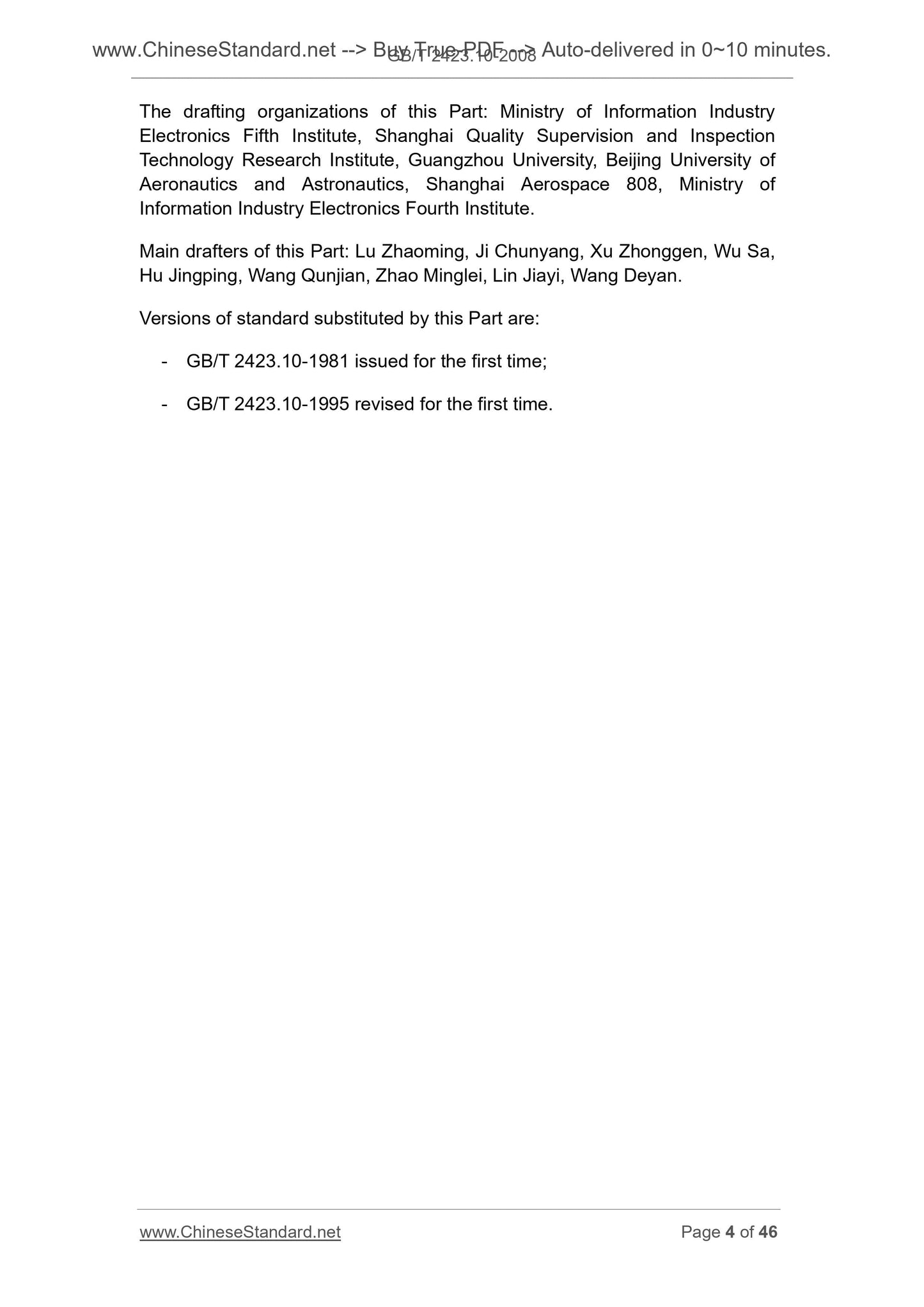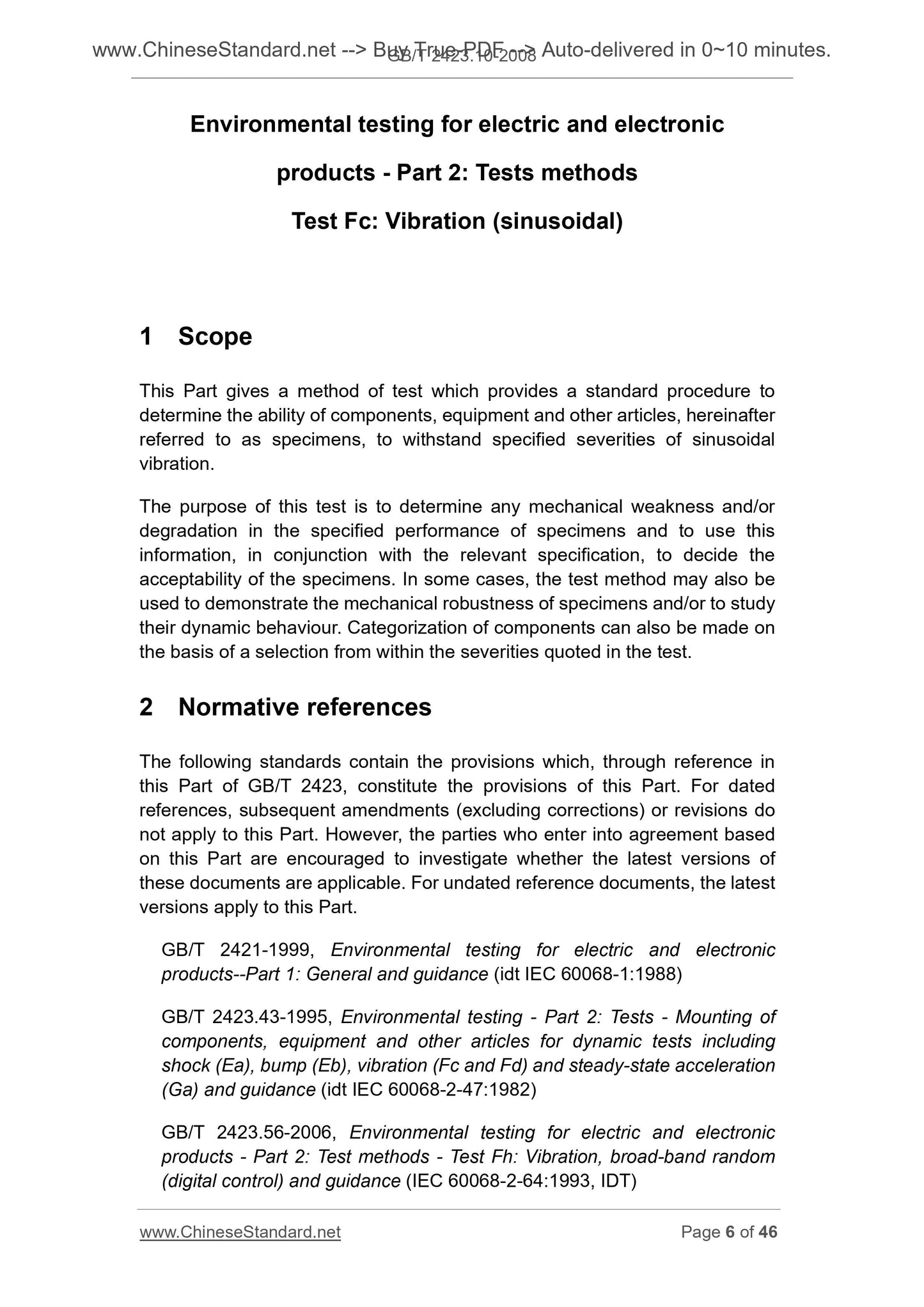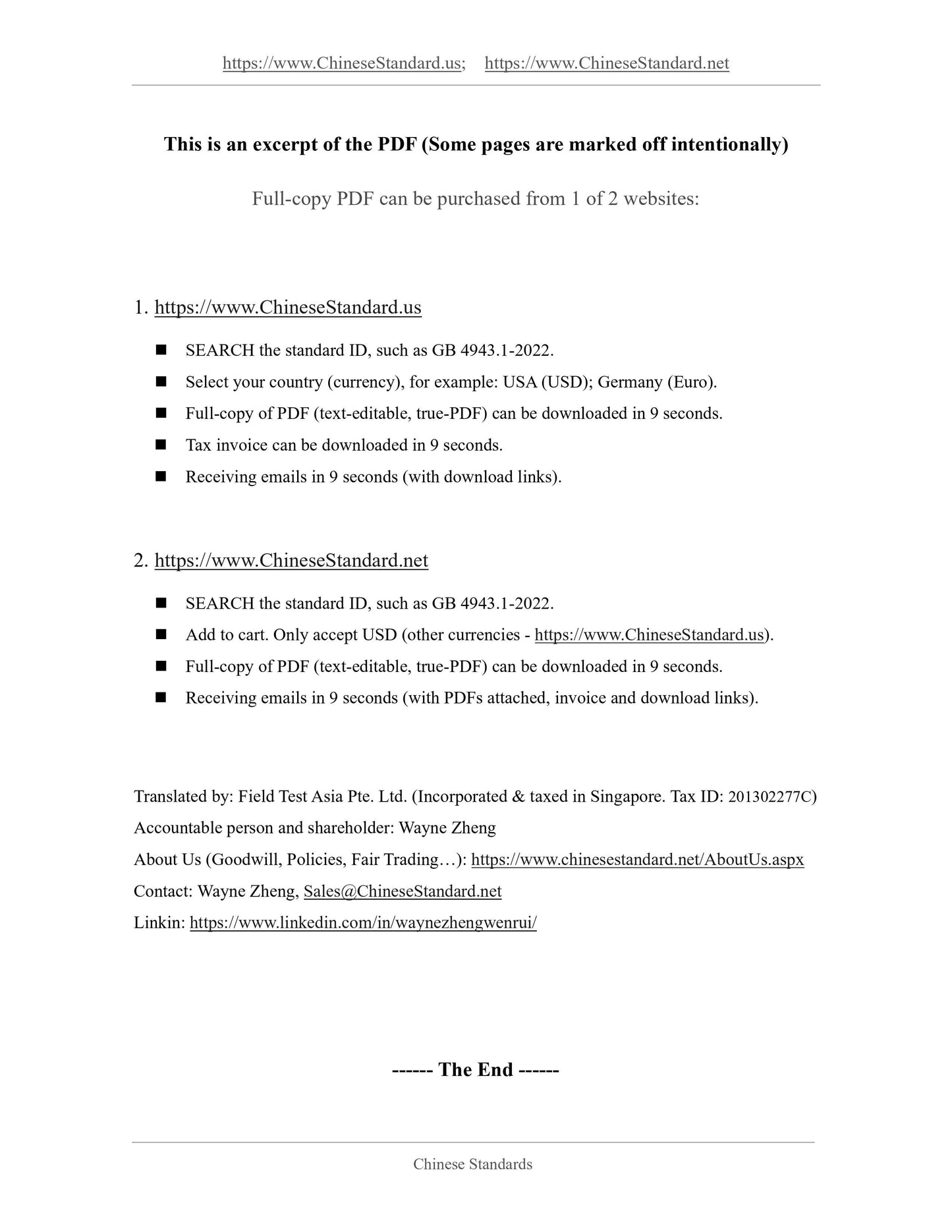1
/
of
6
PayPal, credit cards. Download editable-PDF and invoice in 1 second!
GB/T 2423.10-2008 English PDF (GB/T2423.10-2008)
GB/T 2423.10-2008 English PDF (GB/T2423.10-2008)
Regular price
$140.00
Regular price
Sale price
$140.00
Unit price
/
per
Shipping calculated at checkout.
Couldn't load pickup availability
GB/T 2423.10-2008: Environmental testing - Part 2: Test methods - Test Fc: Vibration (sinusoidal)
Delivery: 9 seconds. Download (and Email) true-PDF + Invoice.Get Quotation: Click GB/T 2423.10-2008 (Self-service in 1-minute)
Newer / historical versions: GB/T 2423.10-2008
Preview True-PDF
Scope
This section presents a standard test procedure procedure for determining the requirements of the components, equipment and other products (hereinafter referred to as samples)The ability to cool the sinusoidal vibration.
The purpose of this test is to determine the mechanical weakness of the sample and/or the characteristics of the situation. Use this information, in conjunction with the relevant specifications
Determine whether the sample can be received. In some cases, this test method can be used to demonstrate the mechanical integrity of the sample and/or to study it
Their dynamic characteristics. It is also possible to divide the component level according to the ability to withstand different levels of rigidity in this test.
Basic Data
| Standard ID | GB/T 2423.10-2008 (GB/T2423.10-2008) |
| Description (Translated English) | Environmental testing - Part 2: Test methods - Test Fc: Vibration (sinusoidal) |
| Sector / Industry | National Standard (Recommended) |
| Classification of Chinese Standard | K04 |
| Classification of International Standard | 19.040 |
| Word Count Estimation | 28,253 |
| Date of Issue | 2008-03-24 |
| Date of Implementation | 2008-10-01 |
| Older Standard (superseded by this standard) | GB/T 2423.10-1995 |
| Quoted Standard | GB/T 2421-1999; GB/T 2423.43-1995; GB/T 2423.56-2006; GB/T 4796-2008; IEC 60050 (721)-1991; ISO 2041-1990 |
| Adopted Standard | IEC 60068-2-6-1995, IDT |
| Regulation (derived from) | Announcement of Newly Approved National Standards No. 5, 2008 (No. 118 overall) |
| Issuing agency(ies) | General Administration of Quality Supervision, Inspection and Quarantine of the People's Republic of China, Standardization Administration of the People's Republic of China |
| Summary | This standard specifies the test method procedure for determining the components, equipment and other products to withstand specified severities sinusoidal vibration. The purpose of this test is to determine the sample mechanical weaknesses and (or) features lower case. Use these data, combined with the relevant norms to determine whether the samples can be received. In some cases, this test method can be used to demonstrate the mechanical integrity of the sample and (or) to study their dynamic characteristics. Can also be subjected to the test under different severities ability to divide the components level. |
Share
